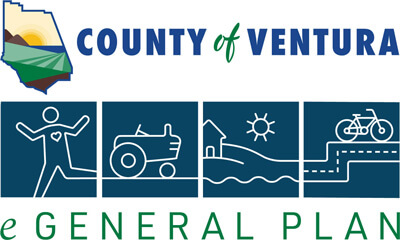Cultural resources are most frequently identified with prehistoric (archaeological) or historic resources. Cultural resources in Ventura County include prehistoric indigenous Native American sites, historic areas of occupation and activity, and features of the natural environment. Cultural resources also include non-renewable, nonmaterial resources such as cognitive systems (including meanings and values attached to items of material culture, biota, and the physical environment), religion and world views, traditional or customary behavior patterns, kinship and social organization, and folklore.
Historical resources refer to the material and nonmaterial expressions of human adaptations that characterized the post-contact (historic) period. These resources include historic event or activity sites, historic archaeological sites, standing architecture and other significant properties, and documents and other sources of historical information, and objects of material culture. Also, more nonmaterial cultural qualities, such as folklore, social organization, and value systems, can be associated with these properties.
Paleontological resources refer to the fossilized remains of plant and animal life. In Ventura County, paleontological remains include examples from most of geological history, including the Paleozoic (542 to 251 million years ago), the Mesozoic (251 to 65.5 million years ago), and the Cenozoic (65.5 million years ago to the present). Careful scientific study of fossilized life forms preserved in the sedimentary and metamorphic rocks of the Ventura County region can lead to identification of local paleo-environmental conditions and biological evolutionary trends. In addition, certain fossil remains are only found in isolated outcrops in Ventura County and are therefore of unique scientific interest.
Archaeological resources refer to the material remains (e.g., artifacts, structures) produced by human beings, whether intentionally or accidentally. The scientific study of these remains can lead to identification of activities, types of adaptation to the environment, and changes in activities and organization that groups of people in the past experienced. Furthermore, these remains often have special significance to Native Americans, ethnic groups, special interest groups (e.g., avocational archaeologists), as well as the general public.
